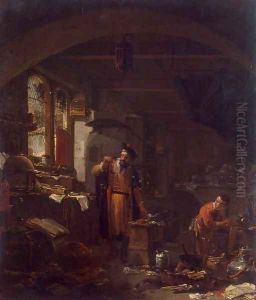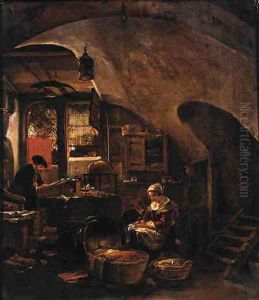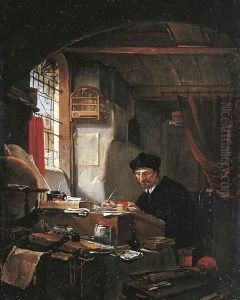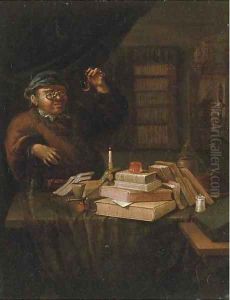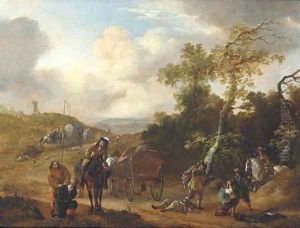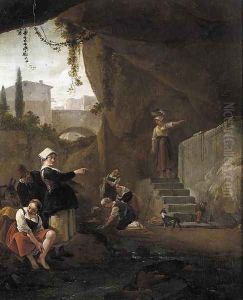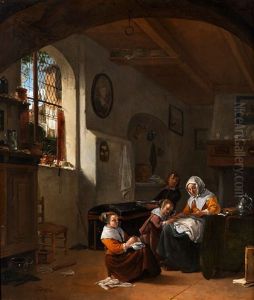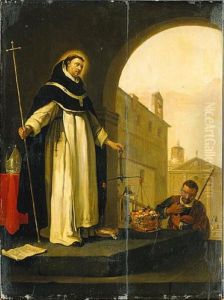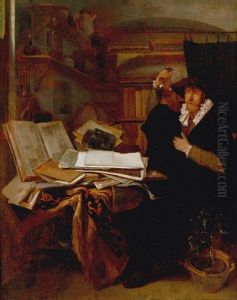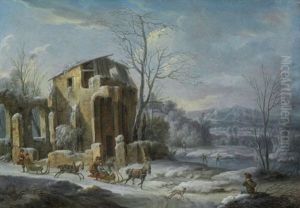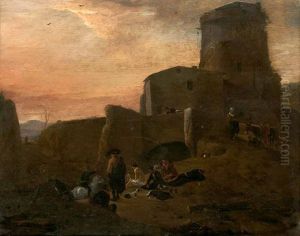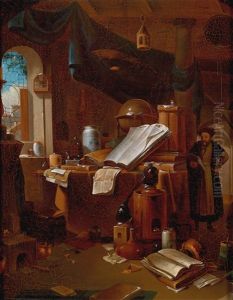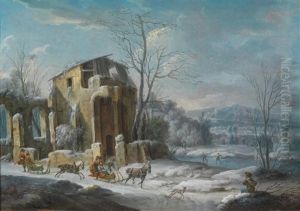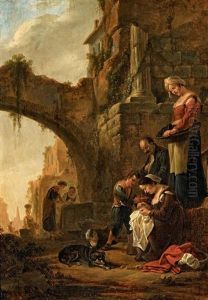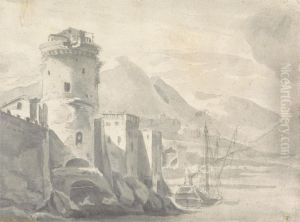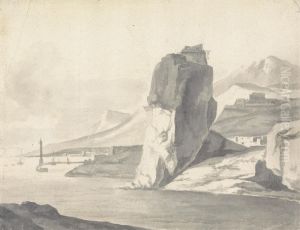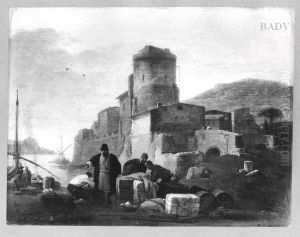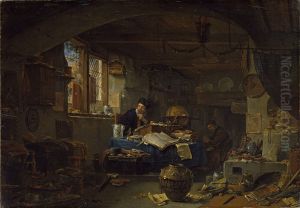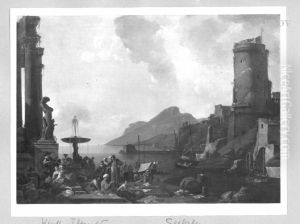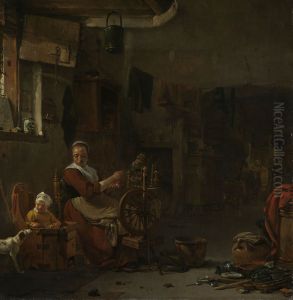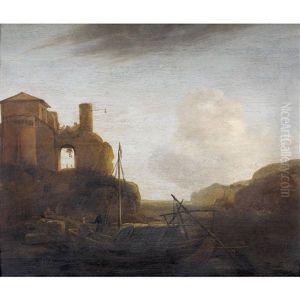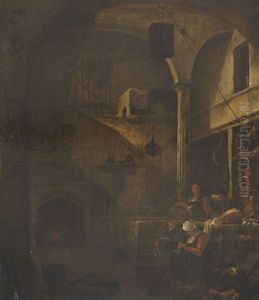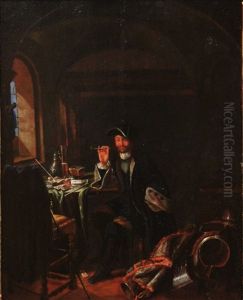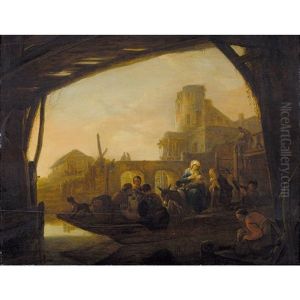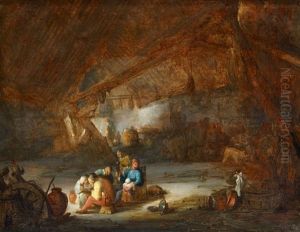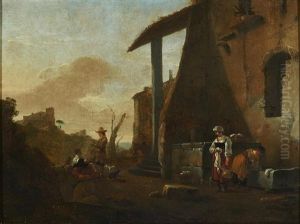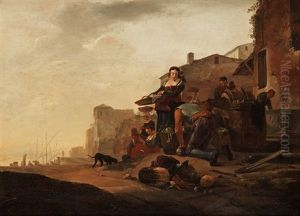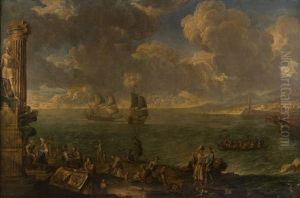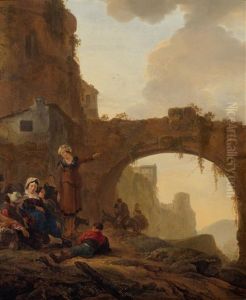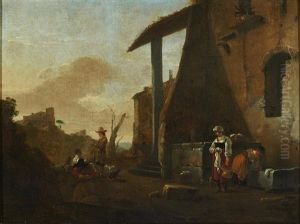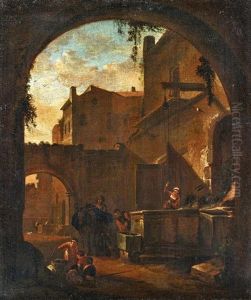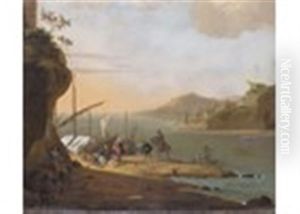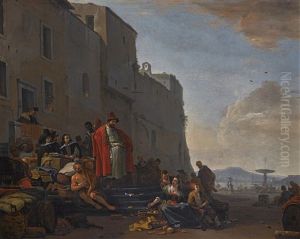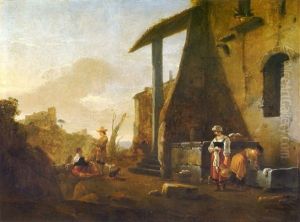Thomas Wijck Paintings
Thomas Wijck (also spelled Wyck) was a Dutch painter born in 1616, in Beverwijk, a small town in the Netherlands. He is renowned for his detailed paintings of interiors, street scenes, and harbors, with a particular focus on depicting the effects of light and shadow. Wijck's work is characterized by its fine detail, atmospheric quality, and the skillful rendering of different textures.
Wijck moved to Haarlem at a young age, where he likely received his artistic training. Although not much is documented about his early education in art, it is known that he became a member of the Haarlem Guild of St. Luke, a city guild for painters, in 1637. This affiliation indicates his recognition and status as a professional artist. In the 1640s, Wijck traveled to Italy, as was customary for many artists of his time seeking to study the works of the Renaissance masters firsthand. His time in Italy had a profound influence on his work, infusing it with elements of Italian architecture and life.
Upon returning to the Netherlands, Wijck settled in Haarlem but also worked in Amsterdam and possibly in London for a time. He became known for his portrayals of alchemist laboratories, a subject matter that was unusual but gained him considerable attention. These paintings, depicting the cluttered and mysterious interiors of alchemists’ workshops, are filled with a myriad of objects that showcase his ability to render materials and light with high precision. Thomas Wijck's depictions of such scenes are valued for their historical insight into the practice of alchemy in the 17th century.
Besides alchemist scenes, Wijck painted Italianate landscapes, harbors, and genre scenes, showing everyday life with an extraordinary attention to detail and ambiance. His works often contained figures, sometimes engaged in labor or leisure, set against the backdrop of detailed architectural or natural landscapes. Wijck's palette was relatively subdued, utilizing earth tones to create a sense of warmth and depth in his compositions.
Thomas Wijck's contribution to Dutch Golden Age painting lies in his unique subject matter, his mastery of light and texture, and his influence on the genre of interior and street scene painting. His work was appreciated during his lifetime and continues to be studied and admired for its detail and historical value. Wijck passed away in 1677 in Haarlem, leaving behind a legacy that captures the curiosity and the mundane of 17th-century life with enduring appeal.
